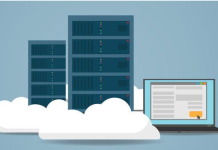Today, people use web apps everywhere — on trains, in remote areas, and even during flights. But what happens when the internet connection drops? Most apps break or stop working. This makes users unhappy and causes problems, especially for apps that need real-time updates.
To solve this, developers build offline fallback systems. These systems let the app continue to work, even when there’s no internet. Once the connection is back, the app syncs automatically. This creates a smooth experience and prevents data loss.
Two powerful tools that help with offline fallback are Service Workers and CRDTs. Service Workers allow apps to work offline by caching important files and requests. CRDTs, or Conflict-Free Replicated Data Types, help apps sync data in real time without conflicts.
If you want to learn how to build apps with these features, a full stack developer course in Bangalore can teach you. It covers how the frontend, backend, and offline systems work together.
Let’s look deeper into how these tools work and how they help create better web apps.
What Are Offline Fallback Systems?
Offline fallback systems are features in an app that let it keep working when the internet is not available. Instead of showing an error, the app:
- Loads saved data from the local storage
- Lets users create or edit content
- Stores the changes locally
- Syncs the changes with the server later
For example, a note-taking app lets users write notes offline. When the internet is back, it uploads the notes to the server. The user doesn’t even notice the delay.
This kind of smooth experience is made possible using Service Workers and CRDTs.
What Are Service Workers?
It is a script that runs in the background of your browser. It acts like a middleman between the app and the network.
Here’s what it can do:
- Cache web pages, images, and other files
- Intercept network requests
- Serve content from cache when offline
- Sync data in the background
When the user visits a site, the Service Worker caches the page. Next time, even if there is no internet, the app opens using the cached data.
This means users can use the app without internet, and the experience feels fast and smooth.
What Are CRDTs?
CRDT stands for Conflict-Free Replicated Data Type. These are special data structures used in distributed systems. They allow changes made offline to be merged safely when syncing with the server or other devices.
Here’s a simple way to understand it:
Imagine two people are writing a shared document. One writes while offline, the other writes online. When both changes are synced, the system must combine them without losing anything.
CRDTs do this automatically by keeping track of the changes and merging them in a smart way. They avoid conflicts and don’t require manual fixes.
CRDTs are perfect for apps like:
- Real-time editors
- Messaging apps
- Task lists
- Collaborative tools
To build apps with CRDTs and Service Workers, you need knowledge of both frontend logic and backend storage. A full stack developer course gives you the full picture, from the browser to the server and everything in between.
How They Work Together
Service Workers and CRDTs can work together to build powerful offline systems.
Let’s take an example of a collaborative to-do app:
- A user opens the app. The Service Worker loads the app from cache.
- The user creates or edits tasks offline.
- The changes are saved using CRDTs in local storage or IndexedDB.
- When the internet comes back, the Service Worker syncs the changes with the server.
- The CRDT system on the server merges all changes without conflict.
This system works even if multiple users are editing the same data from different locations.
The result? A fast, offline-ready, and real-time app experience.
Steps to Build a Real-Time Offline Fallback System
Let’s walk through how to build this system in simple steps.
Step 1: Register a Service Worker
In your web app, register a Service Worker using JavaScript.
if (‘serviceWorker’ in navigator) {
navigator.serviceWorker.register(‘/service-worker.js’);
}
This will allow your app to use offline features.
Step 2: Cache Important Files
Inside your service-worker.js file, cache your app’s assets.
self.addEventListener(‘install’, event => {
event.waitUntil(
caches.open(‘app-cache’).then(cache => {
return cache.addAll([
‘/’,
‘/index.html’,
‘/styles.css’,
‘/app.js’
]);
})
);
});
Now, your app can load even when offline.
Step 3: Store User Data Offline
Use IndexedDB or local storage to save user actions when offline.
function saveTaskOffline(task) {
// Save the task using local storage or IndexedDB
}
Step 4: Use CRDTs for Data Sync
Use a CRDT library like Automerge or Yjs. These help track changes.
let doc = Automerge.init();
doc = Automerge.change(doc, ‘Add task’, doc => {
doc.tasks.push({ title: ‘Buy groceries’ });
});
Step 5: Sync When Online
When the device goes online, use a sync system to send CRDT updates to the server and receive others.
window.addEventListener(‘online’, () => {
// Send and receive CRDT updates
});
With these steps, your app works offline and syncs correctly when the internet is back.
To understand how this works behind the scenes and how to connect everything, a full stack developer course in Bangalore is a good way to get hands-on practice.
Real-Life Examples
Here are some apps that use offline fallback and CRDTs:
Google Docs
You can edit documents offline. When you go online, changes sync. It uses conflict-resolution systems similar to CRDTs.
Notion
You can create notes offline. It uses a background sync system to upload notes later.
Figma
A design tool that lets teams collaborate in real-time. It handles multiple edits at the same time using structures like CRDTs.
These apps show how powerful offline systems can make users’ lives easier.
Benefits of Using These Tools
Using Service Workers and CRDTs brings many advantages:
- Better user experience: The app works even without internet.
- No data loss: Changes are saved locally and synced later.
- Real-time collaboration: Users can work together without blocking each other.
- Fast loading: Cached pages load quickly.
- Fewer support requests: Users won’t complain about lost data.
Apps that work offline are more trusted and used more often.
Challenges and How to Solve Them
Building offline systems is not always easy. Here are some common problems:
Data Conflicts
If two users change the same item, which one is saved?
Solution: Use CRDTs or timestamps to merge changes smartly.
Storage Limits
Browsers have limits for local storage.
Solution: Only store necessary data offline. Sync and delete old entries.
Sync Failures
What if sync stops halfway?
Solution: Use retry logic. Wait and try again.
Complex Logic
Offline sync needs both frontend and backend changes.
Solution: Learn full stack development to build both parts.
A developer course teaches how to handle frontend code, backend APIs, data sync, and more.
Conclusion
Building apps that work offline and sync in real-time is important today. Users want smooth and fast apps, even when the internet is slow or unavailable. Service Workers help you cache and load data offline. CRDTs help you sync and merge changes without conflict.
When combined, these tools create strong offline fallback systems. You can build apps like editors, chat tools, or to-do lists that feel modern and reliable.
If you want to build apps that work online, offline, and in real-time, a full stack developer course is a great way to learn. You’ll get the skills to build web apps that are smart, responsive, and ready for real users.
With these tools and knowledge, you’ll be ready to build the next generation of apps that users can trust — anytime, anywhere.
Business Name: ExcelR – Full Stack Developer And Business Analyst Course in Bangalore
Address: 10, 3rd floor, Safeway Plaza, 27th Main Rd, Old Madiwala, Jay Bheema Nagar, 1st Stage, BTM 1st Stage, Bengaluru, Karnataka 560068
Phone: 7353006061
Business Email: enquiry@excelr.com

























